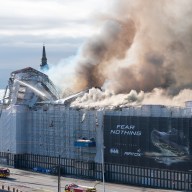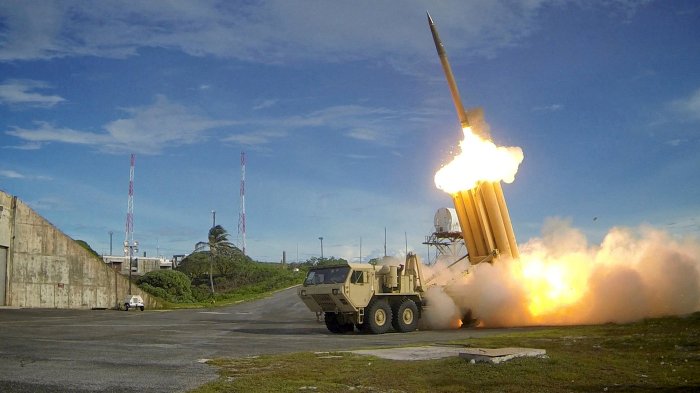By Tom Perry and Ahmed Rasheed
BEIRUT/BAGHDAD (Reuters) – Islamic State’s far-flung enemies in Syria and Iraq pressed ahead on Wednesday with major advances on multiple fronts that have put some of the greatest pressure on the ultra-hardline Islamists since they declared their caliphate two years ago. A spokesman for a U.S.-backed alliance in northern Syria said it was poised to enter the city of Manbij, a week after launching an assault with the aim of cutting off the last stretch of Turkish frontier still under Islamic State control. A short distance further west, rebels fighting against both Islamic State and the government of President Bashar al-Assad said Islamic State fighters had pulled out of an area near the border.
Assad’s forces, backed by Russian airpower, also launched an offensive against Islamic State last week and have advanced in territory further south.
And at the opposite end of the self-proclaimed caliphate, 750 km down the Euphrates River, Iraqi government forces said they had fought their way into built-up areas of Falluja, the second-biggest city in Iraq under Islamic State control and the militants’ closest bastion to Baghdad. The Iraqi government is backed both by U.S. air power and by Shi’ite militia allied to Washington’s regional foe Iran.
A five-year civil war in Syria and the weakness of the Iraqi government have made it difficult for world powers and their disparate allies on the ground to coordinate a campaign against the militants. But the simultaneous attacks on a variety of fronts have created unprecedented pressure on the militants, who have imposed harsh rule over territory with millions of inhabitants while making enemies of all global and regional powers. AMBITIOUS CAMPAIGN
The campaign by a U.S.-backed alliance called the Syria Democratic Forces is the most ambitious so far waged with support of the United States in Syria, where Washington previously lacked effective allies on the ground. A small contingent of U.S. special forces troops are assisting the SDF, which was formed last year to combine militarily successful Kurdish militia with Arab allies more acceptable to Washington’s regional NATO ally Turkey. The goal of the offensive, launched last week, is to capture the area around the town of Manbij west of the Euphrates, and seal off the last 80 km (50 mile) stretch of the Syrian-Turkish border in Islamic State hands. The frontier has been used for years by Islamic State as their main supply route for arms and manpower, and more recently to send followers back to Europe for attacks like those carried out in Brussels and Paris since last year. The SDF had advanced to the outskirts of Manbij but had held back from entering to limit harm to civilians, a spokesman for the SDF-allied Manbij Military Council said.
“Any moment that we want to enter it, we can, but because of the presence of civilians … we are being cautious about entering the city,” Shafan Darwish told Reuters. “I can say that the matter of liberating Manbij is settled.” Darwish said Islamic State fighters had fled the city and had rigged homes there with explosives.
Further west, also in the border area, Islamic State fighters suddenly withdrew from villages near the town of Marea in the face of a counter-attack from anti-Assad rebels, according to the Syrian Observatory for Human Rights, a monitoring group. Islamic State had managed to besiege the rebel-held town of Marea in a significant advance late last month, stranding thousands of civilians there and prompting a U.S.-led coalition to air drop weapons to rebels, rebel sources said. Rebel fighters in Marea broke the siege on Wednesday when they captured the village of Kafr Kalbin on the road linking Marea with Azaz, 20 km (12 miles) to the northwest at the border with Turkey.
“It seems they (Islamic State) can’t keep several fronts open at the same time. It is a strategic area, they were on the verge of entering Azaz,” Observatory Director Rami Abdulrahman said. Assad’s army, with Russian air support, has also launched its own offensive against Islamic State, in what a pro-Damascus newspaper in Lebanon characterized last week as a “race to Raqqa” — to capture territory around Islamic State’s de facto Syrian capital before the area falls to U.S. allies. Assad has been fighting a civil war against a range of enemies for five years. He vowed on Tuesday to recapture “every inch” of Syria, in a defiant speech seen as a setback to diplomatic efforts to resolve the conflict. He is supported by Moscow and Tehran, and opposed by Washington, European powers, Arab states and Turkey. FALLUJA ASSAULT
In Iraq, government troops fought their way into a built-up district of the Islamic State bastion of Falluja for the first time on Wednesday after halting on the outskirts of the city last week.
“Our forces have begun in the early hours of the morning progressing in al-Shuhada,” Sabah al-Numani, a spokesman of the elite Counter-Terrorism Service, said.
“Our forces are now cleaning up the district from the roadside bombs and booby-trapped houses, and then we will hand it over to the police forces to hold the ground,” Numani said. The next target would be the city center. Prime Minister Haider Abadi ordered the assault of Falluja on the Euphrates last month. The risky strategy veers from the plan of his U.S. allies, who want Baghdad to focus instead on recapturing Islamic State’s Iraqi de facto capital Mosul on the Tigris River further north. Falluja, just an hour’s drive from the capital, is in territory where Sunni Muslim tribes have long resisted the Shi’ite-led government in Baghdad and where U.S. forces faced the biggest battles of their own 2003-2011 occupation. Washington worries that the Iraqi military could become bogged down in hostile territory there, and is also concerned about the role of Shi’ite militia, whose leaders criticized Abadi last week for slowing the advance to protect civilians. The United Nations said on Wednesday as many as 90,000 civilians could be trapped inside Falluja, nearly doubling its earlier estimate.
(Writing by Peter Graff, editing by Peter Millership)















